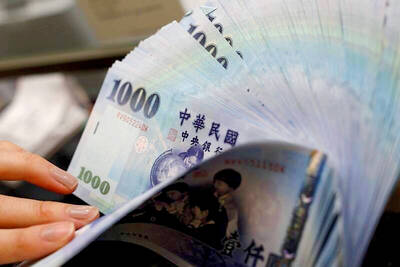US labor and community organizers meeting with US Federal Reserve Chair Janet Yellen challenged officials who are ready to raise interest rates to first come visit the poorest neighborhoods with them before saying that the economy has recovered.
Kati Sipp, one of about two dozen activists meeting Yellen, said at a press conference on Friday in front of the central bank in Washington that she would show Philadelphia Fed President Charles Plosser “what life is like in this economy” for his city’s unemployed.
“Clearly Charles Plosser hasn’t been coming out the way that I work,” Pennsylvania Working Families director Sipp said. “I work on 60th Street in West Philadelphia in a storefront office and every single day someone or a couple of people come in to my office because they are looking for work.”
Members of the group met with Yellen and Fed governors Stanley Fischer, Jerome Powell and Lael Brainard. The coalition of 20 community groups, labor unions and religious leaders from around the US wants the Fed to hear the concerns of ordinary US residents as it prepares to raise rates. It is part of wider public pressure, including from legislators of both parties, who want more accountability and transparency from the central bank.
The Fed has been criticized by Democratic and Republican party groups over its rescue of big Wall Street banks in the financial crisis that began in 2008, and over subsequent steps to support the economy through zero interest rates and massive bond purchases.
The group meeting with Yellen and her colleagues on Friday included individuals struggling to find work despite the improving economic picture in the US, Ady Barkan, senior staff attorney at the Brooklyn-based Center for Popular Democracy, one of the organizers of the meeting, said in an interview.
“They all listened very intently and asked questions,” Barkan said of Yellen and the three governors. “They were very interested in hearing about the personal stories of the folks we brought.”
Barkan said Rounds told the Fed officials that “sky-high unemployment” in the St Louis area had contributed to “desperation” in the town.
Another speaker was Shemethia Butler, an unemployed woman from Washington. She recounted for Yellen how she was laid off from a job that offered no paid sick days after becoming ill and missing time at work, Barkan said.
The jobless rate has fallen to 5.8 percent from a 26-year high of 10 percent in October 2009. Interest rates have been held near zero since December 2008 and most Fed officials project that they will raise borrowing costs sometime next year.
Still, millions of US citizens can find only part-time work, while average hourly wages have risen at about a 2 percent pace for the past five years, barely outpacing inflation.
“The economy is not working for the vast majority of people,” Barkan told reporters before the meeting in front of the central bank headquarters facing the National Mall. “It’s too important of an institution to be controlled and dominated by big banks and corporations, rather than the public.”
In addition to low rates to help the unemployed, the groups are pushing for a more open and transparent search process for regional bank presidents that includes more community input. Barkan said the group asked Yellen for support in arranging meetings with each regional Fed president.
While formal changes to the process of selecting regional Fed leaders would require legislation, Barkan said the Fed board of governors held significant informal influence over the process.
“I’m sure they could change the process if they wanted to,” he said.
Plosser and Richard Fisher of Dallas both plan to retire next year and the “Fed Up” coalition wants more public input in naming their successors. Both banks have said they have hired executive search firms to find candidates.
Economist Josh Bivens, research and policy director at the Economic Policy Institute in Washington, said the Fed’s willingness to arrange the meeting was “incredibly encouraging” because the central bank “is one of the most important institutions in the world, but few Americans know it.”
While the unemployment rate has declined to a six-year low, there remains “too large a gap between today and a healthy economy,” he said, adding that stakes are highest for disadvantaged groups, including African-Americans. Their unemployment rate tends to be twice as high as the broader US level both “in good times and in bad,” Bivens said.

Merida Industry Co (美利達) has seen signs of recovery in the US and European markets this year, as customers are gradually depleting their inventories, the bicycle maker told shareholders yesterday. Given robust growth in new orders at its Taiwanese factory, coupled with its subsidiaries’ improving performance, Merida said it remains confident about the bicycle market’s prospects and expects steady growth in its core business this year. CAUTION ON CHINA However, the company must handle the Chinese market with great caution, as sales of road bikes there have declined significantly, affecting its revenue and profitability, Merida said in a statement, adding that it would

MARKET LEADERSHIP: Investors are flocking to Nvidia, drawn by the company’s long-term fundamntals, dominant position in the AI sector, and pricing and margin power Two years after Nvidia Corp made history by becoming the first chipmaker to achieve a US$1 trillion market capitalization, an even more remarkable milestone is within its grasp: becoming the first company to reach US$4 trillion. After the emergence of China’s DeepSeek (深度求索) sent the stock plunging earlier this year and stoked concerns that outlays on artificial intelligence (AI) infrastructure were set to slow, Nvidia shares have rallied back to a record. The company’s biggest customers remain full steam ahead on spending, much of which is flowing to its computing systems. Microsoft Corp, Meta Platforms Inc, Amazon.com Inc and Alphabet Inc are

RISING: Strong exports, and life insurance companies’ efforts to manage currency risks indicates the NT dollar would eventually pass the 29 level, an expert said The New Taiwan dollar yesterday rallied to its strongest in three years amid inflows to the nation’s stock market and broad-based weakness in the US dollar. Exporter sales of the US currency and a repatriation of funds from local asset managers also played a role, said two traders, who asked not to be identified as they were not authorized to speak publicly. State-owned banks were seen buying the greenback yesterday, but only at a moderate scale, the traders said. The local currency gained 0.77 percent, outperforming almost all of its Asian peers, to close at NT$29.165 per US dollar in Taipei trading yesterday. The

The US overtaking China as Taiwan’s top export destination could boost industrial development and wage growth, given the US is a high-income economy, an economist said yesterday. However, Taiwan still needs to diversify its export markets due to the unpredictability of US President Donald Trump’s administration, said Chiou Jiunn-rong (邱俊榮), an economics professor at National Central University. Taiwan’s exports soared to a record US$51.74 billion last month, driven by strong demand for artificial intelligence (AI) products and continued orders, with information and communication technology (ICT) and audio/video products leading all sectors. The US reclaimed its position as Taiwan’s top export market, accounting for